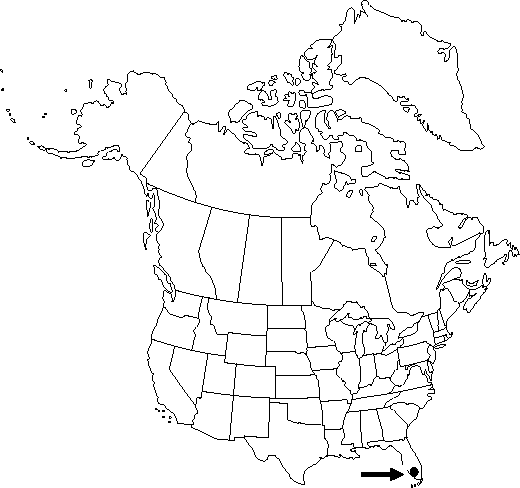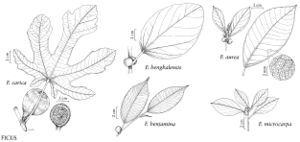Ficus benjamina
Mant. Pl., 129. 1767.
Trees, evergreen, to 10 m. Roots adventitious, occasionally hanging. Bark gray, smooth. Branchlets brown, glabrous. Leaves: stipules 0.8-1.2 cm; petiole 0.5-2 (-3) cm. Leaf-blade oblong, elliptic, lanceolate, or ovate, 4-6 (-11) × 1.5-6 cm, nearly leathery, base rounded or cuneate, margins entire, apex acuminate or cuspidate; surfaces abaxially and adaxially glabrous; basal veins 1 (-2) pairs, short; lateral-veins (6-) 12 (-14) pairs, regularly spaced, uniform; secondary-veins prominent. Syconia solitary or paired, sessile or subsessile, orange, yellow, or dark red, nearly globose, 8-12 × 7-10 mm, glabrous; subtending bracts 2-3, crescent-shaped, 0.5-1.5 mm, glabrous; ostiole closed by 3 small, flat, apical bracts 1.5-2 mm wide, umbonate.
Phenology: Flowering all year.
Habitat: Disturbed thickets and hammocks
Elevation: 0-10 m
Distribution

Fla., West Indies (Lesser Antilles), native to Asia
Discussion
Ficus benjamina is commonly cultivated as a houseplant. The name probably refers to the supposed relation of the plant to the source of a resin or benzoin procured from the Orient in antiquity.
Selected References
None.
